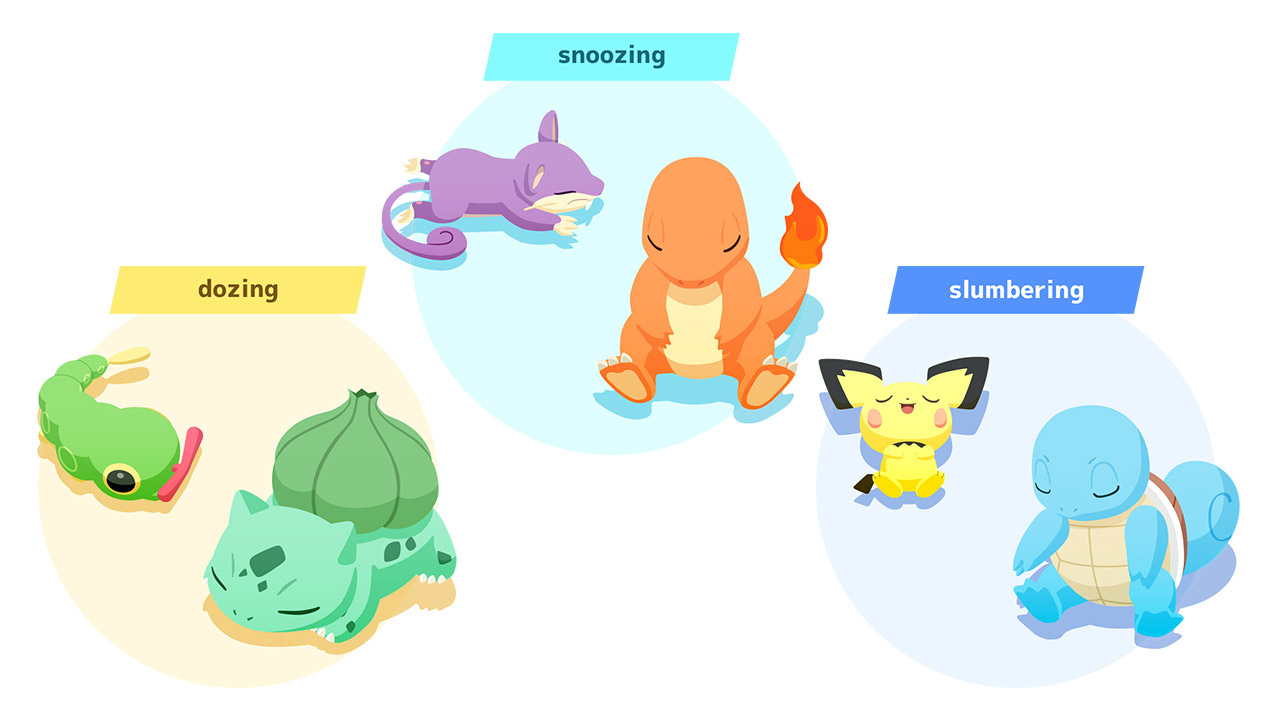The big unexpected health and fitness brand to watch out for? Pokémon
Pokémon Go and Pokémon Sleep show there’s more appetite than ever for mobile fitness games

When I was a young lad way back in 1997, I turned on my GameBoy for the first time and heard a now-familiar, dramatic 8-bit tune, and a black-and-white sprite of Professor Oak welcomed me to the world of Pokémon. Pokémon went on to grip generations of kids (and more than a few adults). Although the Pokémon Company continued to produce video games, toys, trading cards, and bedroom sets, it never really hit the heights it did in the late 90s-early 00s – until 2016.
That year saw the release of Pokémon Go, an AR mobile gaming app that encouraged users to get outside and walk around in search of digital Pokémon. Users of the best fitness trackers would have seen their step counts skyrocket. Again, Pokémon temporarily had the world in a vice, and though the player base remains quite strong, it’s nowhere near what it was in the app’s early days. Pokémon Sleep, the newest app from Niantic and the Pokémon Company using the IP for health purposes, aims to grab people all over again, now with sleep instead of steps.
The genius of Pokémon Go came in tying digital Pokémon to real-life GPS locations, causing them to pop up in unexpected places and driving players to go out and explore their surroundings. Several instances of rare Pokémon strategically appearing in busy locations caused veritable stampedes of players, such as a rare Snorlax appearance in Central Park back in 2016.
It dramatically increased the step count of players venturing outside to hunt for Pokémon. If you pick up an egg in the Pokémon games, it hatches after several thousand steps; Pokémon Go made this a reality, using your phone’s GPS information, just like one of the best running watches, and hatching the egg after thousands of real-life steps. It encouraged players to get out and visit specific areas in their town or city by turning them into key in-game locations such as Gyms and PokéStops.
Fitness games have always had a mixed reception, although some have managed to stand out from the pack. Zombies, Run! is a particular standout, as users can complete missions and simulate a horde of hungry zombies running after them to motivate them to run faster. However, almost all fitness apps and tools use gamification strategies, offering dopamine-inducing virtual rewards, such as badges and trophies for filling the movement ring on your best Apple Watch or moving up the leaderboard during Peloton classes. Strava’s really got this covered, grouping popular local routes into ‘segments’ and publishing which Strava members have completed them the fastest or most often.
Snatching the top spot on a popular Strava segment can give you the same rush of adrenaline as conquering a Pokémon gym based at London’s Paddington Station or New York’s Brooklyn Bridge, with good reason: both achievements are based on the same dopamine-inducing gamification strategies. Pair that addictive mechanism with Pokémon’s massively popular collect-’em-all intellectual property, and it’s no surprise that Pokémon Go hit upon such a winning formula.

Pokémon Sleep is taking this incredibly successful strategy and applying it to sleep health instead of exploration and step count. By keeping your phone nearby on the bed as you sleep, Pokémon Sleep can monitor your movements and breathing via your phone’s gyroscope and microphone and analyze your sleep, just like apps such as Sleep Cycle or ShutEye. It's encouraging people to look up sleep tips in order to improve at Pokémon Sleep, and occasionally cheat to earn extra transferable rewards for Pokémon Go, which very much defeats the point.
Sign up for breaking news, reviews, opinion, top tech deals, and more.
By consistently using the app to monitor and improve your sleep, you can earn points to add ‘Drowsy Power’ to the sleep Pokémon Snorlax. The higher your ‘Drowsy Power’, the more Pokémon you gather while you sleep every night, and so on. The more you use the app when you sleep, the more Pokémon and points you get. Pokémon Sleep also assigns you chronotypes, like many of the best sleep trackers and some of the best fitness trackers do. Fitbit, for example, will assign you an animal based on your style of sleep. Pokémon Sleep does the same – except, of course, the animal breathes fire or shoots lightning or whatever.
Will it become more popular than most sleep apps? Probably. Never bet against the power of Pikachu and Co, and the Pokémon Company’s unique understanding of gamification and addictive pocket monster collection. It’s unlikely to be as accurate as sleep trackers like the Oura Ring or Fitbit Charge 5, as it’s going off your smartphone’s sensors rather than recording biometrics such as skin temperature with dedicated sensors. However, it’ll get far wider adoption as a free-to-download app than it ever would if the service was tied to a physical device.
If Sleep takes off in the same way as Go, there’s no telling where Pokémon goes next in the health space. Pokémon Race, perhaps, where you run alongside an animated Rapidash that acts as a virtual pacer, just like the PacePro program on the best Garmin watches does? The sky’s the limit.

Matt is TechRadar's expert on all things fitness, wellness and wearable tech.
A former staffer at Men's Health, he holds a Master's Degree in journalism from Cardiff and has written for brands like Runner's World, Women's Health, Men's Fitness, LiveScience and Fit&Well on everything fitness tech, exercise, nutrition and mental wellbeing.
Matt's a keen runner, ex-kickboxer, not averse to the odd yoga flow, and insists everyone should stretch every morning. When he’s not training or writing about health and fitness, he can be found reading doorstop-thick fantasy books with lots of fictional maps in them.